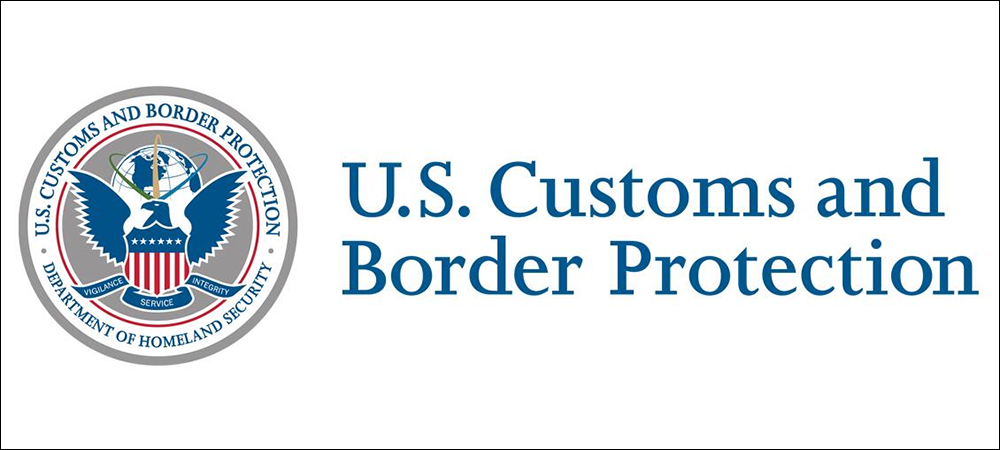U.S. Customs and Border Protection (CBP) is deploying a multi-energy portal (MEP) inspection system to improve the scanning of commercial vehicles that cross the U.S. border. The system, provided by technology company Leidos, was developed to help the border agency increase the accuracy and efficiency of cargo scanning. The technology captures data about each vehicle and will apply artificial intelligence (AI) to help patrol officers more quickly and accurately identify what is being transported over the border.
The solution provides non-intrusive inspection (NII) for commercial vehicles at land and sea ports of entry so officials can gain insight regarding cargo without opening doors and physically inspecting the contents of each truck or van. The system is first being installed at the border crossing in Brownsville, Texas, where it will be taken live this summer. Leidos’ MEP system was previously used this year at Joe Biden’s Presidential inauguration and at Super Bowl LV.

Mathieu Guillebaud
The company’s Vacis MEP system consists of a QR code and RFID reader, as well as license plate recognition (LPR) technology to capture data about each driver and vehicle from documentation, situational awareness cameras, low-energy backscatter for concealment areas and high-energy x-ray transmission for cargo inspection, as well as radiation detection—all to capture details regarding what is inside and outside every vehicle. The software links the identity and imaging data and will provide AI to help border agents quickly identify which vehicles might require further screening, as well as which are cleared to cross the border.
For CBP, the system is intended to make border crossings for commercial vehicles faster, while screening is intended to be more accurate and efficient. CBP serves as the United States’ unified border agency within the U.S. Department of Homeland Security that provides management, control and protection of U.S. borders at and between official ports of entry. Its core mission is to facilitate legitimate international trade, and it inspects cars, trucks, railcars and sea containers, along with personal luggage, packages, parcels and flat mail. By using an NII system, CBP seeks to detect and prevent inadmissible cargo—contraband, illicit narcotics, unreported currency, guns, ammunition and other illegal merchandise, as well as people—from being smuggled into the country.
Leidos provides technology-based solutions for defense, aviation and biomedical research. This new $480 million contract covers a five-year span, with the option to extend that term to 10 years. As part of the contract, the MEP system will be deployed to existing vehicle-inspection sites across the United States. At each site, Leidos will integrate and install the technology at border crossings, then train CBP’s staff to use it, according to Mathieu Guillebaud, Leidos’ product management lead. Leidos is among the defense industry’s largest IT services providers, he says.
Leidos developed the solution to incorporate its existing Vacis IP6500 integrated x-ray inspection system, along with detection technology from Viken Detection, consisting of its Osprey-EVX and Osprey-UVX under-vehicle x-ray imager. Under normal circumstances, the Vacis unit can scan as many as 150 vehicles per hour, providing high-resolution images through 300 millimeters (11.8 inches) of steel. The radiation-detection function can identify the presence of any nuclear materials, while the Osprey unit can detect whether contraband is stashed under a vehicle.
As drivers arrive at the border crossing, they present their cargo manifest and personal ID, such as their driver’s license and passport. Agents use the system’s scanners to scan the QR code printed on documents or read the UHF RFID tag embedded in passports and other documentation. That data, combined with the LPR information, is populated in the software. If approved, the driver can pass through the gate and past the screening gate without stopping.
The screening gate provides two forms of x-ray scanning: high-energy transmission for inspecting cargo inside a vehicle, as well as low-energy backscatter to identify suspicious items in or around concealment areas, such as under the vehicle. High energy is focused on providing a view all the way through the high-density cargo, whereas the backscatter technology is more focused on external portions of the cargo, for finding concealed objects under the vehicle, behind the bumper or in the doors of the cab, for example. The solution is expected to enhance CBP’s ability to identify contraband by giving agents multiple views into cargo.
A radiation portal monitor (RPM) scan measures any radiation emissions, and that data is fused with the other vehicle data captured for analysis, according to Guillebaud, thus providing a unified view of the vehicle. Agents at the border command center can view data regarding the vehicle and driver in real time, along with multiple views of the cab and cargo. They can then analyze the scan results and either release the vehicle or refer it for secondary inspection. The entire process is designed to move quickly, he says. “This MEP is the latest version of our Vacis system,” he adds, leveraging Viken’s backscatter functionality for the first time.
Leidos intends to provide the solution to other customers, both domestically and internationally. In the meantime, the company expects the technology to increase CBP’s capability to scan incoming vehicles quickly, as well as identify concerns automatically and reduce the length of queues at the border. The firm provides a separate program for passenger occupied vehicles (POVs).
During the Presidential inauguration, CBP deployed two Leidos mobile high-energy M6500 systems, as well as two Vacis XPL low-energy POV systems, at Robert F. Kennedy Memorial Stadium, where responder equipment and personnel were located. At Super Bowl LV, CBP deployed two M6500s to screen commercial delivery trucks and vans for weapons, explosives and other contraband, using advanced inspection technology. “We have been very happy and proud to support CBP,” Guillebaud states.


